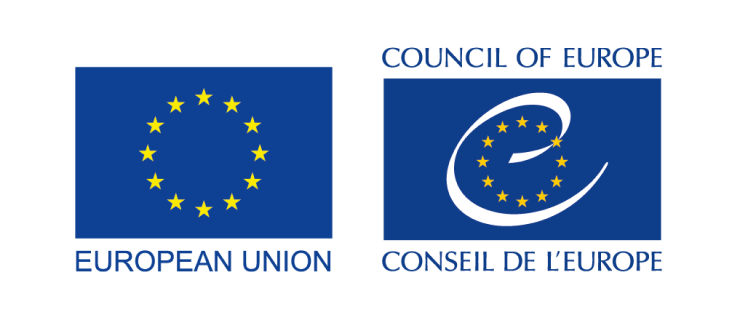Learning Materials for Teachers
A Space of our own
Multiple Authors • Association for Historical Dialogue and Research AHDR
Levels and forms of education
Lower Secondary Education
Upper Secondary Education
Post Secondary Education
Resource type
Lesson plans
Alternative textbooks
Audio-visual materials (photographs, videos, movies, audio files)
Interactive formats (e.g. group work materials, board games, etc.)
Activities outside the classroom (e.g. tour guides, etc.)
Historic approaches concerned
Cultural History
Gender History
Historic period
No data
Countries or areas concerned
Cyprus, Europe, Southeastern Europe
Languages
English, Greek, Turkish
Description
A Space of Our Own: A Handbook on Gender and Monuments in Intersectional Public Spaces is designed to support and help expand on existing materials as well as address the need for applied educational content that explores multi-levelled relations between gender and space by means of monuments in Cyprus. It aims to provide educators, youth workers, and other professionals, as well as activists, with comprehensive series of lesson plans and educational material together with related theoretical background, that correspond to specific subjects within curricula as an addendum to formal education or source for extra-curricular activities. This publication results from the recognition that women and all non-conforming genders are often publicly invisible, and in that sense, it is crucial to claim a space of their own, that is a public space which is inclusive and equally respectful to the needs and experiences of all genders, including women and people of non-binary gender identities. Through the joint exploration of monuments in Cyprus, it becomes evident that patriarchal norms, women’s invisibility, and cultures of violence are prevalent across the divide, while the lessons also identify and cultivate common aspirations, such as gender equality, peace, and mutual respect. Educational Goals To critically reflect on what a monument is and can mean in relation to public space. To critically engage with examples of public art to raise awareness of learners’ and/or participants’ surrounding environment as well as ask them to reflect on their own experiences. To identify and cultivate common aspirations such as gender equality, peace, and mutual respect. Overview There are three main parts to the handbook: Theoretical Background: includes Chapters 1, 2, and 3. Chapter 1 is an introduction to the rationale behind the structure of the handbook and a guide on how to use it. Chapter 2 offers an introduction to the key terms gender, monument, and public space as well as discussions around these concepts, such as the authors’ positioning of intersectional public spaces, as a literature review. Chapter 3 provides information on the conceptual and methodological framework behind the handbook. Educational Materials: consists of four thematic units. Each unit is introduced by providing focused information on the context and outline of the unit. Each unit includes lesson plans and activities that give instructions and tips to the educators along with resource sheets. Each lesson plan is presented with guiding information related to appropriate age groups, duration of activities and related subject links to curriculum, such as “History”, “Social Sciences” and “Art”. Although the activities in this manual are designed for the Cypriot context, they can be transferred and adjusted to other societies, especially those marked by conflict and division. Useful tips, list of materials as well as suggestions are given where possible, to help guide educators and users to apply and adapt materials to their environments. Above all, the materials are tailored to empower both educators and learners to envision alternatives. Glossary: provides definitions of key terms and concepts used throughout the handbook. These terms are highlighted throughout the handbook and can be incorporated into the educational materials or used for self-learning. Summary of thematic units Thematic Unit 1 - Narrating Herstory-History explores how gender―as one identity among other identities―shapes how we narrate our history. This is evident in the stories, events, and people deemed worthy of being depicted in monuments and how different stories, events and people are represented. For example, much fewer statues are devoted to women in comparison to men, while genders are depicted in stereotypical roles. This way, historical monuments can either become a vehicle for the reproduction of gender inequalities or a means for inclusive and balanced representations of the past. Thematic Unit 2 - Monuments aims to make learners rethink what ‘monument’ means, what it is built for and how it is used, through some examples from Cyprus. Looking at the existing monuments with a critical eye and questioning what is seen will enable the participants to form their own perspectives on the monuments. The unit will also help learners create new forms of ‘monuments’ using their imagination and creativity. Thematic Unit 3 - Looking at Public Art through gender equality focuses on global and local art examples that exist in public spaces, such as murals and sculptures, to introduce alternative definitions of what a public artwork is, what it potentially can be, and the wider implications of public space in relation to gender, social identity, diversity, and transformation. Looking at certain characteristics of public art can allow participants to practice listening to and expressing different perspectives, as a way of introducing concepts of diversity, inclusion, and gender equality. Thematic Unit 4 - Exploring public space and diversity focuses on a more critical exploration of our surroundings and public spaces and encourages learners to see common public spaces through a new lens that explores how gender, difference and identity intersect and are produced and reproduced in public spaces
Keywords
Gender History
Women's History
Monuments
Remembrance
Association for Historical Dialogue and Research
